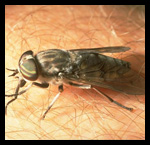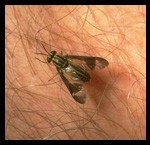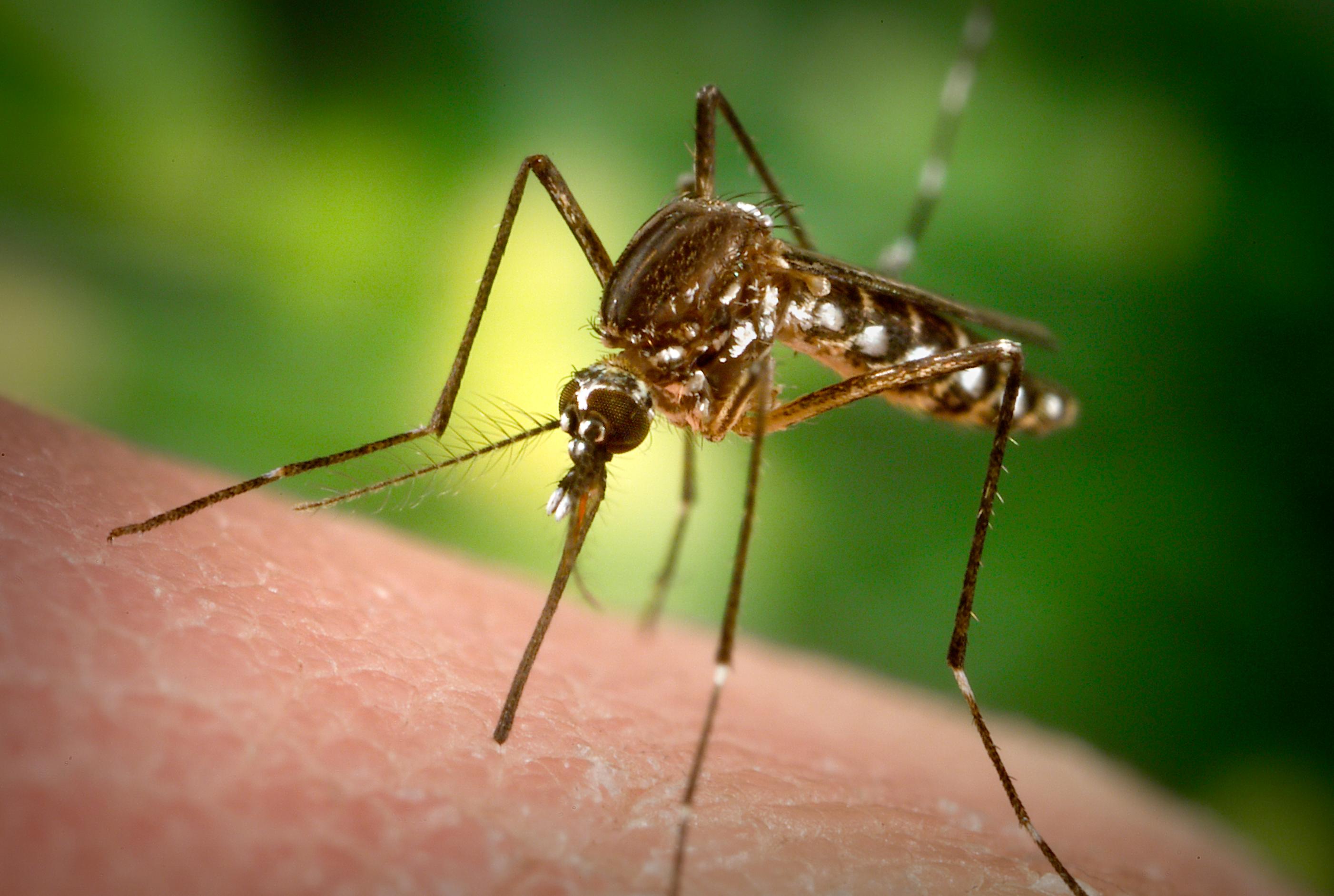Horse flies and deer flies are very striking in their appearance. They are fairly large flies with aggressive biting habits. They are familiar to most people and can ruin ones day by their persistent annoyance when seeking a bloodmeal.
Description:
The eggs are 1-3 mm long and are deposited in masses either in a single layer (deer flies typically) or in tiers 3-4 high (horse flies and some deer flies). The eggs are white upon being laid bit darken to gray, brown or black.
The larvae are large, whitish and spindle-shaped. They have strong mouthparts that are used to capture and subdue their prey. The larvae grow in aquatic and semi-aquatic habitats, such as; mud or saturated vegetations in marshes or near pond or creek margins. They can also be found in terrestrial habitats such as beneath forest litter. They are predacious on a variety of vertebrates such as chironomid midges, crane flies and even other horse fly larvae. Horse fly larvae are found singly due to their cannibalistic behavior while deer fly larvae can be found in large groups.
Adults are stout-bodied with prominent antennae and brilliantly patterned eyes that fade to black after they die. They have large mouthparts that consist of bladelike mandibles and maxillary laciniae that assist in lacerating the skin. They are pool feeders, which means they cut a hole in the skin and the lap up the pooling blood. The males do not take a blood only the females do in order to produce eggs. Adults are very strong flies and can travel several miles to find a blood source.
Deer flies prefer to bite a host high on the body, head or shoulders while horse flies will feed in various regions but the legs are the favored sites for many attacking livestock.
Animals attacked:
Cattle, horses, other mammals at times and humans
Veterinary Impact:
Horse flies and deer flies are significant livestock pests with their painful and persistent biting behavior. Heavy attacks can lead to reductions in weight gains of beef cattle, reduced milk yield, reduced fed utilization efficiencies and hide damage from the puncture wounds. Horses under attack will be irritable and distracted by trying to avoid from being bitten.
The adult flies serve as vectors for many disease agents (viruses, bacteria, protozoans and nematodes) of animals.
Disease Transmission:
Equine Infectious Anemia (EIA), sometimes referred to as swamp fever, is common in the southeastern US and is mechanically (on the body of the fly) transmitted to horses and other equids. It is a viral disease that causes lethargy, weight loss, and sometimes death in an affected animal. There are two strains of the virus; one is more intense than the other. An acutely infected horse almost always dies quickly. A chronically infected horse will eventually die of complications or unapparent carriers may live without obvious health problems.
Anaplasmosis, caused by Anaplasma marginale, is found frequently in the southeastern US. This disease causes adult cattle to show marked anemia, fever and weight loss and has a mortality rating of 50%.
Control:
It is very difficult to achieve horse fly and deer fly control. An area with horse flies typically has many species with many different seasonal occurrences. In addition, the flies only stay in contact with a host for a few minutes to get the bloodmeal and then they are gone until they need to eat again which is every 3-4 days. Using topical pesticides is ineffective due to horse fly behavior, but short term control is possible. Aerial applications and treating for the larvae are ineffective. The best option is to provide shelter for the animals or pasturing them away from infested areas. Traps have been proven to provide effective control. Two trap options are box traps and CO2 baited sticky traps. Biological control agents can offer some protection by feasting on or parasitizing the larvae and eggs.






